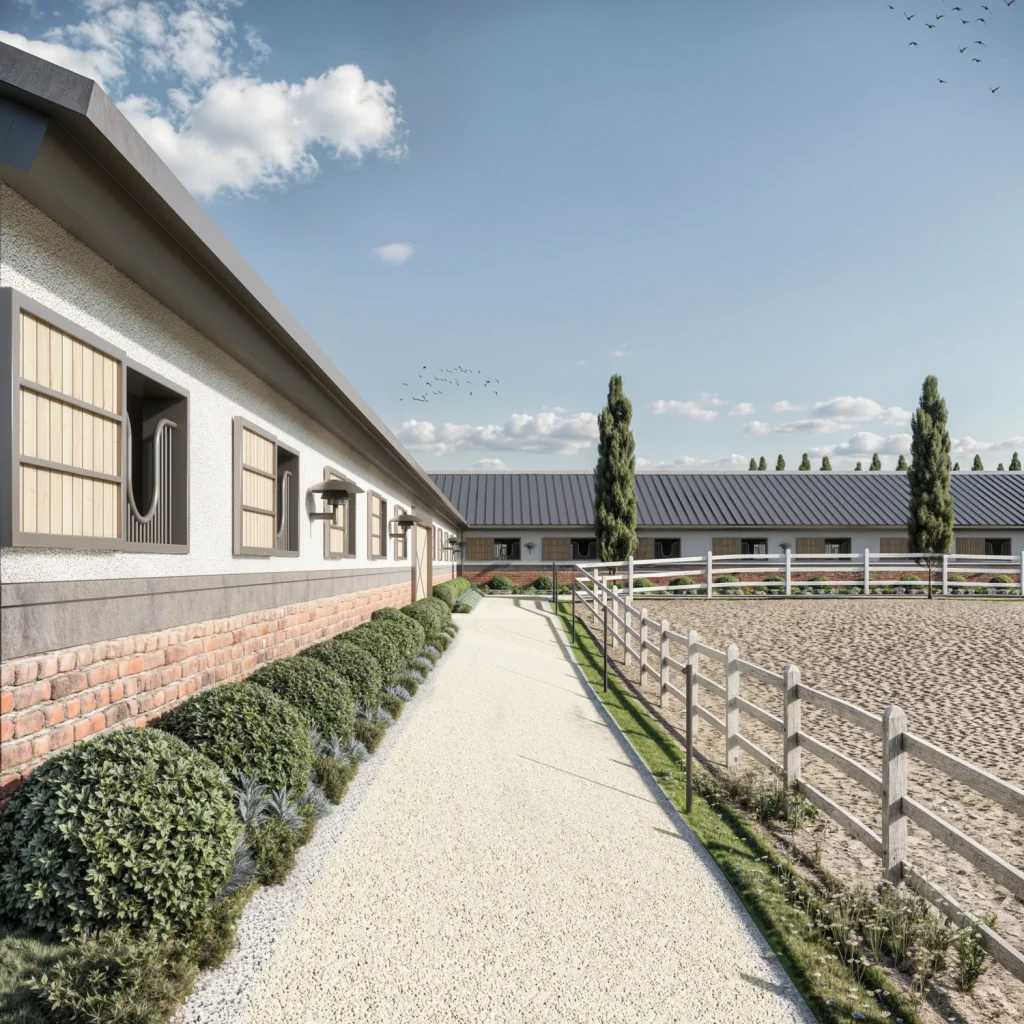Designing an equestrian facility is a complex task that requires careful consideration of various factors to ensure the safety, comfort, and optimal performance of both horses and riders. Let’s delve deeper into the key elements of equestrian facility planning.
Surface Selection and Preparation
- Surface Types: The advantages and disadvantages of sand, grass, synthetic, and natural surfaces, and the most suitable types for different disciplines.
- Surface Preparation: Soil analysis, drainage systems, compaction processes, regular maintenance, and renovation.
- Surface Slopes: Gentle slopes that allow horses to move easily without slipping.
- Dust Control: Methods to control dust, which can lead to respiratory problems (watering, specialized surface coverings).
Stable Design and Layout
- Stable Size: The area per horse, feeding and watering areas, and freedom of movement.
- Stable Materials: The advantages and disadvantages of materials like wood, concrete, and steel, and the selection of hygienic and durable materials.
- Ventilation: Ensuring proper ventilation, humidity, and temperature control in stables.
- Lighting: Natural and artificial lighting to meet the visual needs of horses.
- Horse Separation: Creating appropriate divisions based on age, gender, and health conditions.
Obstacles and Training Areas
- Obstacle Types: Fixed and movable obstacles, natural obstacles, and obstacles of varying heights and widths.
- Obstacle Course Design: Safety measures, technical challenges, and courses suitable for different skill levels.
- Variety of Training Areas: Flat areas, round arenas, hills, water obstacles, and other training areas.
Watering and Feeding Areas
- Water Sources: Ensuring a constant supply of clean and fresh water and regular cleaning of water containers.
- Feeding Area Hygiene: Keeping feed clean and dry, and regularly cleaning feeding containers.
- Feeding Times: Feeding schedules that align with horses’ dietary habits.
Social Areas and Visitor Areas
- Rest Areas for Riders: Locker rooms, showers, and relaxation lounges.
- Visitor Areas: Parking for visitors, waiting areas, and viewing platforms.
- Horse Care Areas: Suitable areas for saddling, bridling, and other grooming tasks.
Safety Measures
- Fences and Gates: Sturdy and high fences to prevent horses from escaping, and secure gate systems.
- Lighting: Adequate lighting for nighttime safety.
- Fire Safety: Fire extinguishing systems and emergency exits.
- First Aid: First aid equipment for emergencies.
Additional Features
- Veterinary Unit: A veterinary unit or a contracted veterinarian for horse health checks and treatments.
- Horse Equipment Storage: A secure storage area for saddles, bridles, halters, and other equipment.
- Horse Trailer Parking: A designated area for parking horse trailers.
- Horse Trails: Designated trails for regular exercise.

